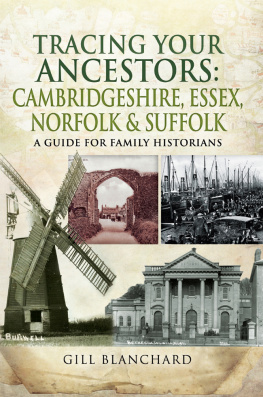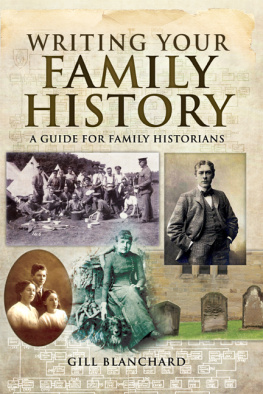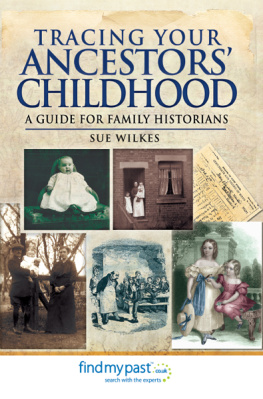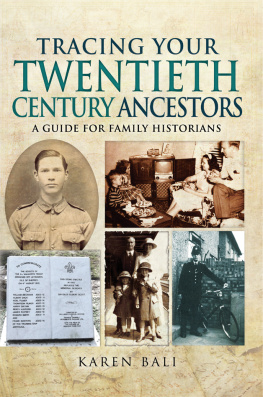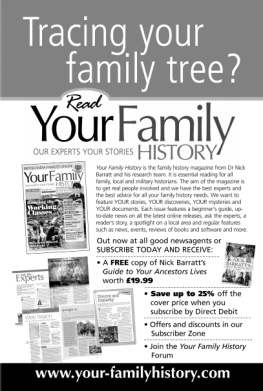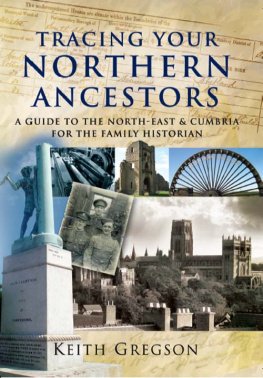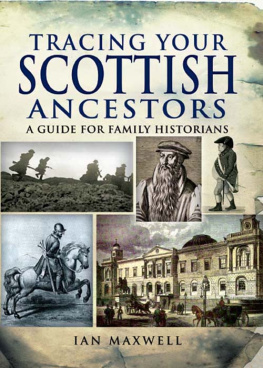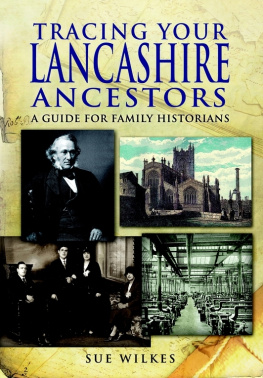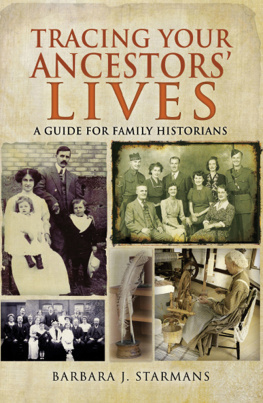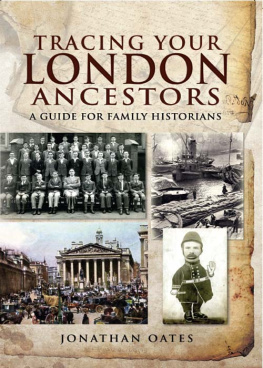Pagebreaks of the print version

TRACING YOUR ANCESTORS: CAMBRIDGESHIRE, ESSEX, NORFOLK AND SUFFOLK
FAMILY HISTORY FROM PEN & SWORD
Tracing Secret Service Ancestors
Tracing Your Air Force Ancestors
Tracing Your Ancestors
Tracing Your Ancestors from 1066 to 1837
Tracing Your Ancestors Through Death Records
Tracing Your Ancestors Through Family Photographs
Tracing Your Ancestors Using the Census
Tracing Your Ancestors Childhood
Tracing Your Ancestors Parish Records
Tracing Your Aristocratic Ancestors
Tracing Your Army Ancestors 2nd Edition
Tracing Your Birmingham Ancestors
Tracing Your Black Country Ancestors
Tracing Your British Indian Ancestors
Tracing Your Canal Ancestors
Tracing Your Channel Islands Ancestors
Tracing Your Coalmining Ancestors
Tracing Your Criminal Ancestors
Tracing Your East Anglian Ancestors
Tracing Your East End Ancestors
Tracing Your Edinburgh Ancestors
Tracing Your First World War Ancestors
Tracing Your Great War Ancestors: The Gallipoli Campaign
Tracing Your Great War Ancestors: The Somme
Tracing Your Great War Ancestors: Ypres
Tracing Your Huguenot Ancestors
Tracing Your Jewish Ancestors
Tracing Your Labour Movement Ancestors
Tracing Your Lancashire Ancestors
Tracing Your Leeds Ancestors
Tracing Your Legal Ancestors
Tracing Your Liverpool Ancestors
Tracing Your London Ancestors
Tracing Your Medical Ancestors
Tracing Your Merchant Navy Ancestors
Tracing Your Naval Ancestors
Tracing Your Northern Ancestors
Tracing Your Pauper Ancestors
Tracing Your Police Ancestors
Tracing Your Prisoner of War Ancestors: The First World War
Tracing Your Railway Ancestors
Tracing Your Royal Marine Ancestors
Tracing Your Rural Ancestors
Tracing Your Scottish Ancestors
Tracing Your Second World War Ancestors
Tracing Your Servant Ancestors
Tracing Your Service Women Ancestors
Tracing Your Shipbuilding Ancestors
Tracing Your Tank Ancestors
Tracing Your Textile Ancestors
Tracing Your Trade and Craftsmen Ancestors
Tracing Your Welsh Ancestors
Tracing Your West Country Ancestors
Tracing Your Yorkshire Ancestors
TRACING YOUR ANCESTORS: CAMBRIDGESHIRE, ESSEX, NORFOLK AND SUFFOLK
A Guide for Family and Local Historians
Gill Blanchard
First published in Great Britain in 2018
PEN & SWORD FAMILY HISTORY
an imprint of
Pen & Sword Books Ltd
47 Church Street
Barnsley
South Yorkshire
S70 2AS
Copyright Gill Blanchard, 2018
ISBN 978 1 47385 999 9
eISBN 978 1 47386 001 8
Mobi ISBN 978 1 47386 000 1
The right of Gill Blanchard to be identified as Author of the Work has been asserted by her in accordance with the Copyright, Designs and Patents Act 1988.
A CIP catalogue record for this book is available from the British Library.
All rights reserved. No part of this book may be reproduced or transmitted in any form or by any means, electronic or mechanical including photocopying, recording or by any information storage and retrieval system, without permission from the Publisher in writing.
Pen & Sword Books Ltd incorporates the imprints of Pen & Sword
Archaeology, Atlas, Aviation, Battleground, Discovery, Family History,
History, Maritime, Military, Naval, Politics, Railways, Select, Social History,
Transport, True Crime, Claymore Press, Frontline Books, Leo Cooper,
Praetorian Press, Remember When, Seaforth Publishing and Wharncliffe.
For a complete list of Pen & Sword titles please contact
PEN & SWORD BOOKS LTD
47 Church Street, Barnsley, South Yorkshire, S70 2AS, England
E-mail:
Website: www.pen-and-sword.co.uk
WHAT THIS BOOK IS ABOUT
T his book is a guide for those researching their ancestry in the East Anglian counties of Cambridgeshire, Essex, Norfolk and Suffolk, and forms part of a series of regional guides, originally published under the heading East Anglia. These four counties form a natural historical division which emerged from the ancient kingdom of the same name, and which has been reinforced through politics and geography over the centuries.
Since this book was first published a phenomenal number of indexes, transcripts and digitized copies of original records have become available online. This new edition has therefore been updated to take this into account. Internet resources have made family history research much more accessible than in the past, and allowed people to make all kinds of breakthroughs they might not have done otherwise. As a result, some people rarely or never venture away from their computers when researching their family history. Nevertheless, local record offices, libraries, museums and family and local history societies are still absolutely vital for family historians. Even if it is online, a researcher needs to know what exists in the first place in order to find a resource, as well as what it might tell them about their ancestors, in order to get the most out of it. Throughout this edition I therefore point to what can be found locally and how online and offline research complement each other.
Finding out basic facts about our ancestors, such as when they were born, married and died, is usually fairly straightforward, but this is simply the start. Questions then arise about how they lived, who they worked for, what their work involved or why they moved from one area to another. This is what distinguishes the family historian from the genealogist.
It is a clich in family history to state that we try to put the flesh on the bones; nevertheless, this is what this book aims to help you to do. There are many excellent books that will tell you the basics of how to research your ancestry step-by-step, as well as guides to places to visit. I do not aim to replicate those, but to provide an insight into which records can be used to find out more about Cambridgeshire, Essex, Norfolk and Suffolk family history, as well as what it was like to live and work in these four counties in the past.
The first section provides an introduction to where to find records in the region, complementary websites and some guidance on what to expect from these resources. As it would be impossible to name every source, or even all of those within certain groups of records, this is a general description of those most useful in taking that extra step to finding out more. There will be further reference to these throughout the rest of the book, along with many examples of the types of information to be found within such records. Also included are places to visit that bring to life the experiences of our ancestors.
The book begins with a general introduction to the history and geography of the region. The next section concentrates on work, trade and commerce, focusing on different themes with a local flavour. Following on from this is a focus on some of the conflicts that have shaped this region. Next come the topics of crime, the poor, migration and education. A separate section on local government is included, which describes some of the records generated through the administration of local affairs.
Associated topics are railways and the effect of urbanization on housing. A separate section covers religion, even though this cannot be easily separated from other subjects due to its permeating influence on all aspects of everyday life. The Resource Directory at the end includes contact details for the archives, websites and places of interest mentioned throughout.

